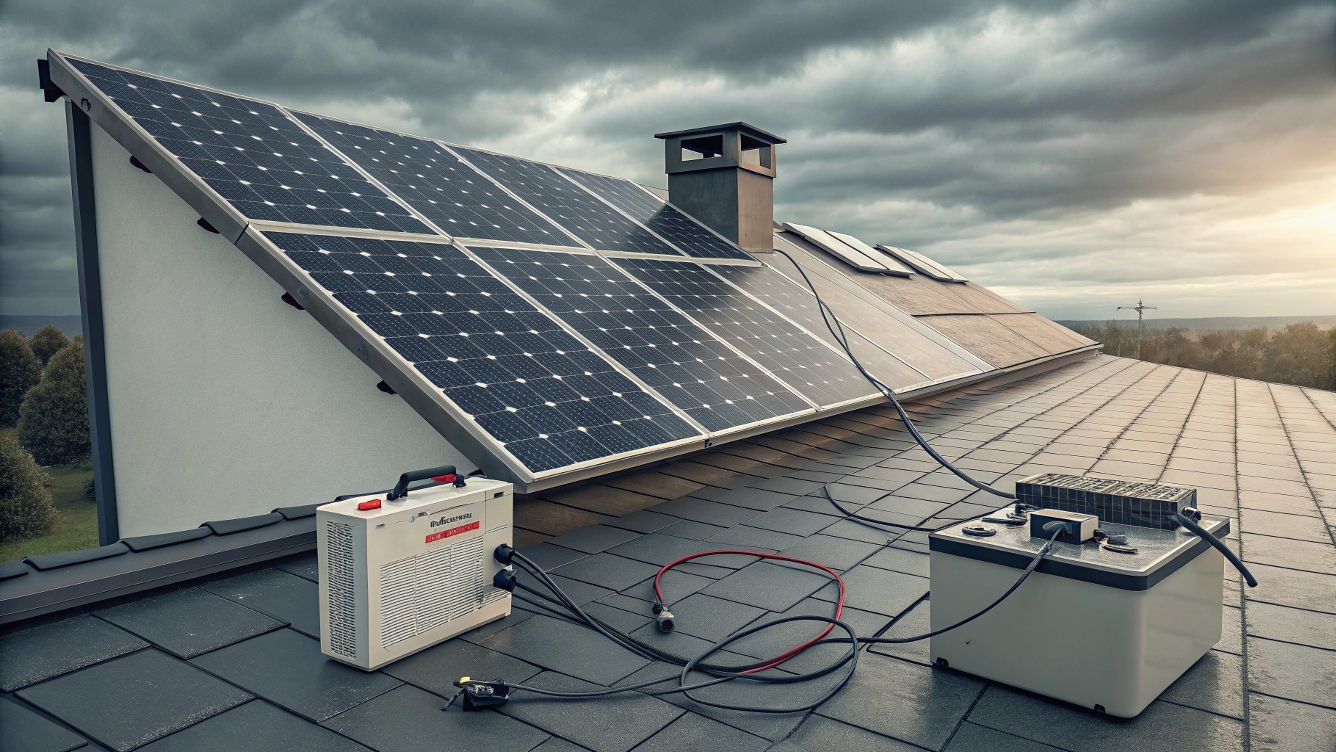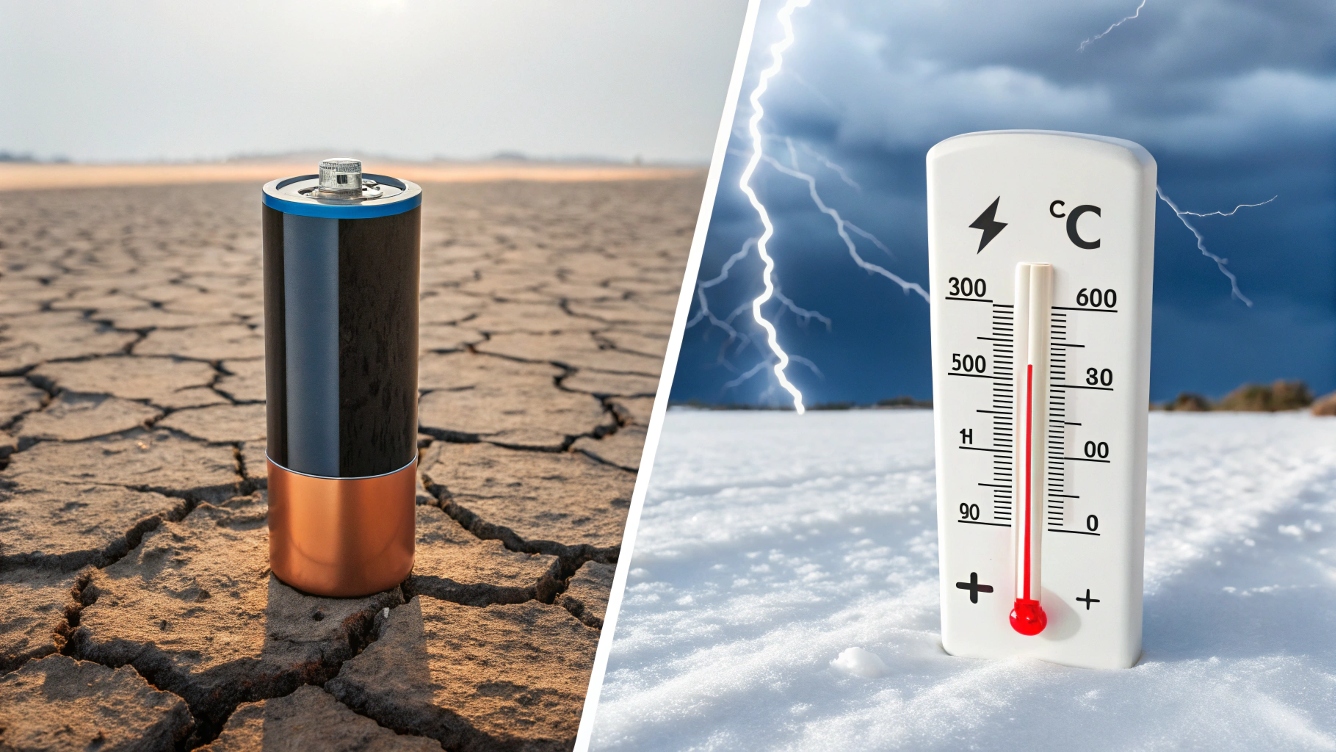
Wat zou de oorzaak kunnen zijn van het verliezen van zonne -batterijen?
EEN Zonne -batterij verliest vermogen kan frustrerend zijn, Maar het begrijpen van de hoofdoorzaken helpt u het probleem snel te diagnosticeren en op te lossen. Hier is een Snel antwoord U kunt gebruiken voor een Google -fragment -fragment:
Snel antwoord: Een zonnebatterij kan door het vermogen verliezen Leeftijd en slijtage, onjuist opladen, Temperatuur extreme, overmatige ladingen, sulfatering, losse of gecorrodeerde verbindingen, A Defecte laadcontroller, omvormer problemen, of een Falende batterijcel.
1. Leeftijd en slijtage
Na verloop van tijd, Alle oplaadbare batterijen zien een geleidelijke daling van de capaciteit. Zelfs de beste LifePo4 Solar -batterijen zal uiteindelijk na duizenden cycli minder kosten vasthouden. Als uw batterij in de buurt van of voorbij de garantieperiode is (vaak 10+ Jaren voor lithium), leeftijdsgebonden capaciteitsverlies is waarschijnlijk.
2. Onjuist opladen
- Onderlading: Als u geen volledige lading kunt bereiken, kan elke cyclus leiden tot “gestrande capaciteit,”Waar de batterij nooit echt uitkomt.
- Overladen: Zonder de juiste regelgeving, Overbelasting van de schadevergoedingen van de interne platen en verkort de levensduur van de batterij.
Gebruik altijd een kwaliteitslaadcontroller - voorkeurs een MPPT model - om de juiste spanning en stroom te behouden.
3. Temperatuur extreme

Batterijchemie is zeer gevoelig voor temperatuur:
- Hoog vuur (> 40 °C): Versnelt de interne afbraak.
- Bevriezing (< 0 °C): Vermindert de beschikbare capaciteit en kan permanente schade veroorzaken.
Houd batterijen in een klimaatgecontroleerde behuizing of gebruik temperatuurgecompenseerde oplaadinstellingen op uw controller.
4. Overmatige ladingen
Meer stroom trekken dan de aanbevolen batterij Krat veroorzaakt een snelle spanningsdaling. Bijvoorbeeld, continu hoog vermogen tekenen door een 2000W omvormer kan een 200Ah batterij veel sneller dan verwacht.
5. Sulfatie (Alleen loodzuurbatterijen)
In loodzuuraccu's, Sulfaatkristallen vormen zich op de platen wanneer ze in een ontladen toestand worden achtergelaten. Sulfatie blokkeert actief materiaal, het verminderen van zowel capaciteit als de acceptatie van opladen. Om te verzachten:
- Presteren egalisatiekosten periodiek (Per fabrikantrichtlijnen).
- Handhaaf tenminste 50% staat van lading Om het sulfatierisico te minimaliseren.
6. Losse of gecorrodeerde verbindingen
Een slechte terminalverbinding of gecorrodeerde kabel kan een hoge weerstand introduceren, Laadstroom verminderen en spanningsdruppels veroorzaken onder belasting. Inspecteren en vastdraaien Alle batterij, controleur, en omvormerverbindingen, en rein corrosie met een bak-soda-oplossing indien nodig.
7. Defecte laadcontroller
Een defecte controller kan onderbelasting, overladen, of falen om te detecteren de batterij correct. Als u onregelmatige oplaadpatronen of oververhitting -controllers opmerkt, test met een bekende goede eenheid of laat het onderhouden.
8. Falende batterijcel
In multi-cel batterijen, Een enkele slechte cel kan de spanning van het hele pakket naar beneden slepen. Symptomen zijn onder meer:
- Snelle spanningsslaag onder belasting.
- Eén batterij in een parallelle bank die een aanzienlijk lagere spanning vertoont.
EEN Batterijbeheersysteem (GBS) kan helpen bij het detecteren en isoleren van falende cellen in lithium batterij inpakken.
9. Omvormer problemen
Een defecte omvormer kan overmatige stand -bystroom trekken of geen vermogen efficiënt converteren, waardoor de batterij afloopt, zelfs als er geen ladingen actief zijn. Controleer de omvormerinstellingen en meet de inactieve stroomtrekking.
10. Opgeblazen zekeringen of stroomonderbrekers
Een opgeblazen zekering of een struikelende breker in het oplaadcircuit zal de laadstroom volledig stoppen, waardoor de batterij zonder aanvulling kan ontladen. Inspecteer regelmatig alle inlinezoningen en brekers.
Problemen oplossen checklist
| Stap | Actie |
|---|---|
| 1 | Inspecteer en draai alle batterij- en omvormerverbindingen vast. |
| 2 | Controleer de functionaliteit en instellingen van de laadcontroller. |
| 3 | Meet de spanning van de rustbatterijen en vergelijk met specificatie. |
| 4 | Controleer op overmatige laadstromen op de omvormer. |
| 5 | Monitor batterijtemperatuur en zorgen voor een goede ventilatie. |
| 6 | Test op sulfatie (leadacid) of celonbalans (lithium). |
| 7 | Vervang eventuele opgeblazen zekeringen of defecte brekers. |
FAQ
Q: Waarom leegloopt mijn zonnebatterij 's nachts?
EEN: Standby -ladingen van omvormers, controleurs, of bewakingssystemen kunnen stroom tekenen als ze niet zijn uitgeschakeld. Controleer ook op parasieten zoals een defecte laadcontroller.
Q: Hoe repareer ik sulfatie in loodzuurbatterijen?
EEN: Voer een egalisatiebelasting uit - raak de laadspanning op het equalisatie -setpoint van de fabrikant uit onder toezicht.
Q: Kan een BMS helpen de levensduur van de batterij te verlengen?
EEN: Ja. Een batterijbeheersysteem brengt celspanningen in evenwicht, Voorkomt over/onderladen, en bewaakt de temperatuur.
Conclusie & Volgende stappen
EEN Zonne -batterij verliest vermogen is meestal een symptoom van onderliggende problemen - of het nu ouder is, onjuist opladen, of hardwarefouten. Door de bovenstaande probleemoplossingstappen te volgen en te investeren in kwaliteitscomponenten zoals een laadcontroller en een robuust batterijbeheersysteem, U kunt de prestaties van uw systeem herstellen en behouden.
Hulp nodig bij het diagnosticeren van uw zonne -installatie? Neem contact op met onze experts voor een gratis systeemcontrole en verken ons assortiment Zonne -batterijen En omvormers Om uw kracht betrouwbaar te laten stromen.

